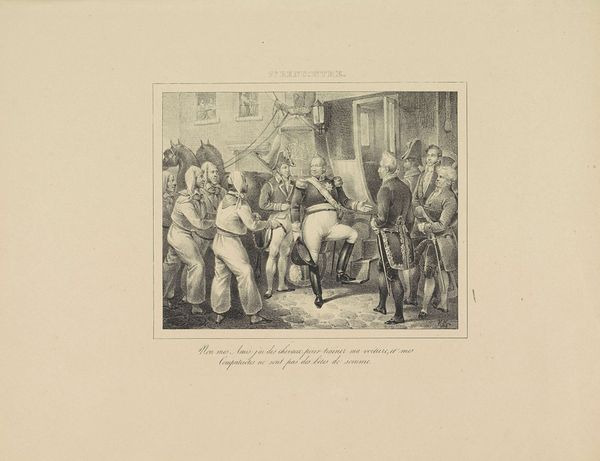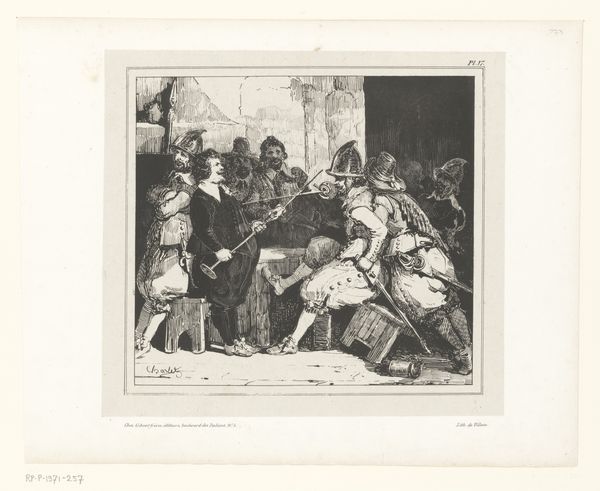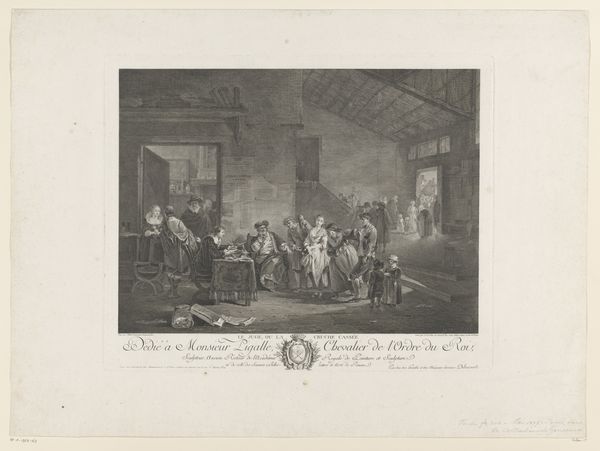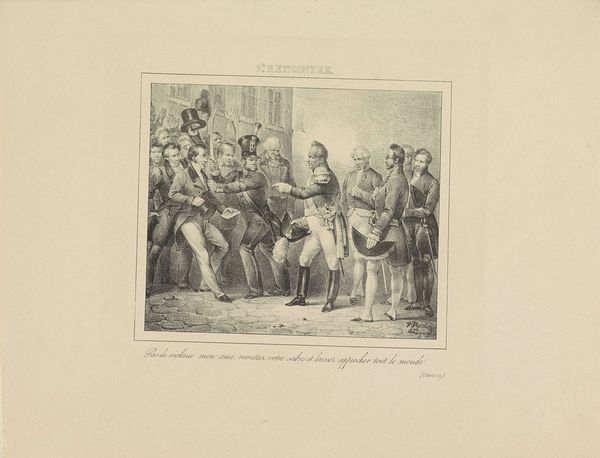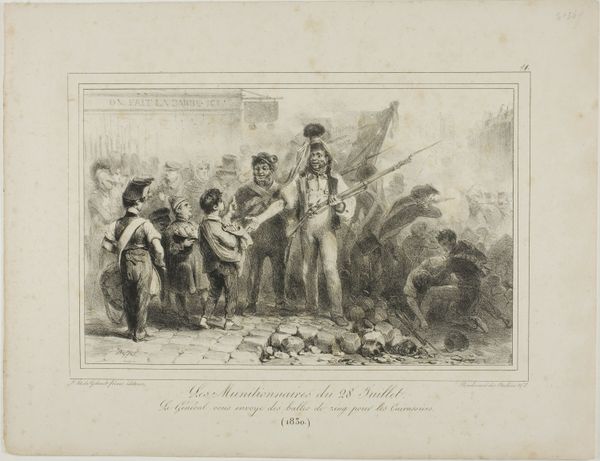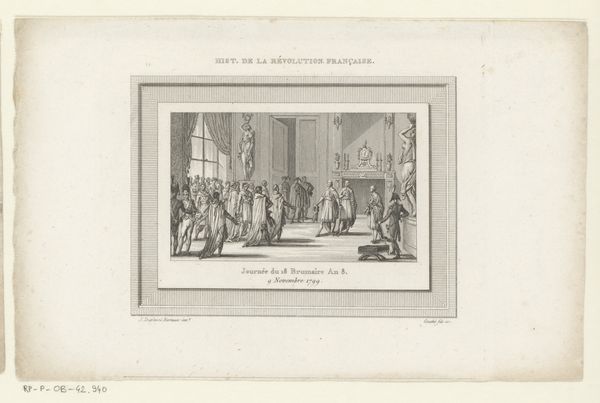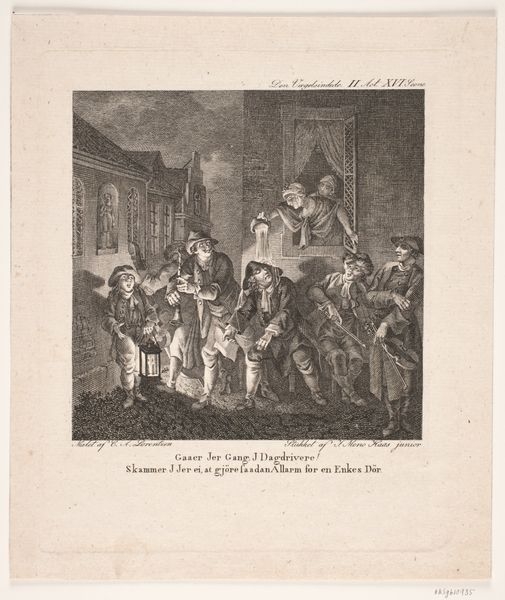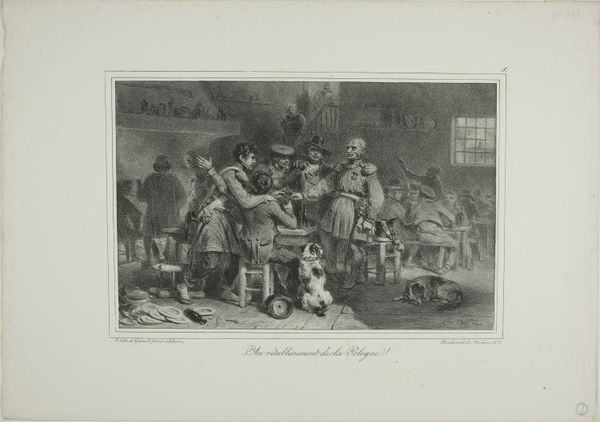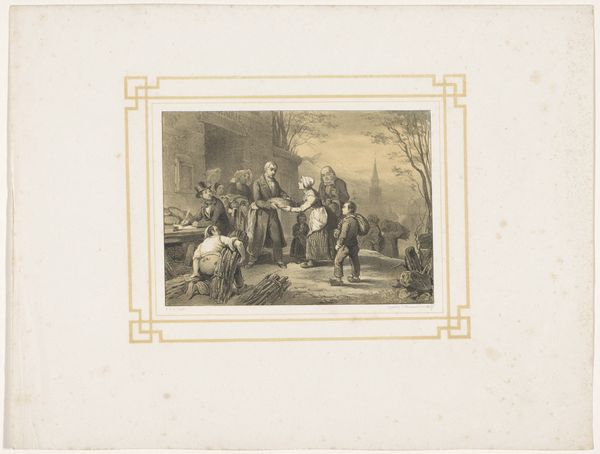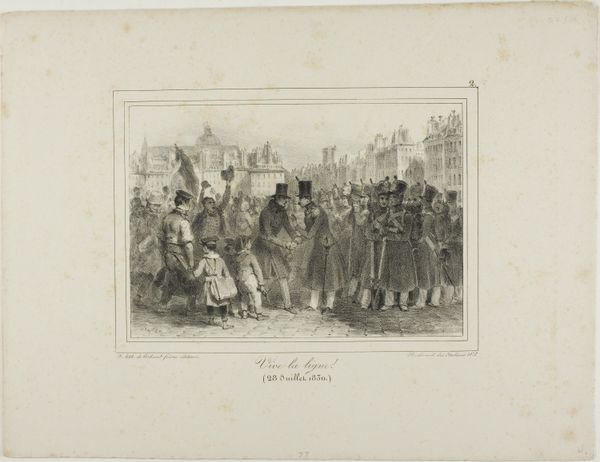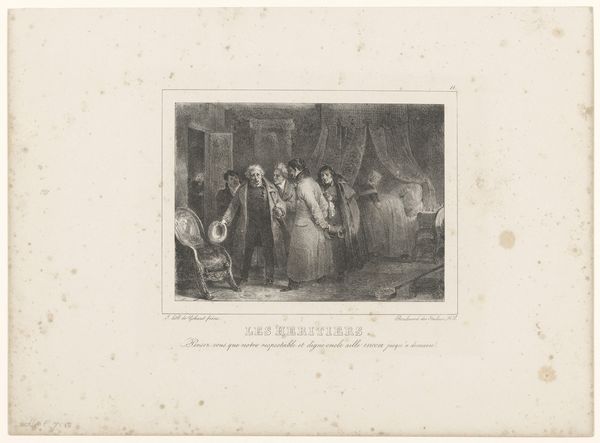
drawing, lithograph, print, paper
#
portrait
#
drawing
#
lithograph
# print
#
paper
#
romanticism
#
france
#
genre-painting
Dimensions: 152 × 221 mm (image); 272 × 358 mm (sheet)
Copyright: Public Domain
Curator: Raffet's lithograph, "Little Aristocratic Club, July 28, 1830", crafted in 1831 and residing at the Art Institute of Chicago, feels immediately satirical to me. Editor: Yes! I find that quality inescapable. The poses, the expressions…there's an overt theatricality, as if the artist caught this coterie mid-performance of… well, I’m not quite sure what! The light, almost frenzied hatching creates a heightened, feverish tone, like a quickly sketched stage set where some high-society drama is unfolding. Curator: Note how Raffet emphasizes symbols of power and privilege – elaborate clothing, haughty expressions, that ridiculously comfortable chair, and even a snoozing lapdog! These figures seem detached from reality, utterly oblivious. The one gentleman practically horizontal and the character entering stage left adds to the mood and feeling. What kind of narrative do you interpret here? Editor: I see this as commentary on the July Revolution—look at the title: “July 28th, 1830". France was on the brink of another upheaval, and Raffet’s "little club" represents the out-of-touch aristocracy, perhaps revelling while society crumbled around them. The central figure's announcement suggests new status: 'Paris is under siege!'. It is absolutely charming to the aristocrats! Curator: Precisely. This moment acts like an absurdist echo of genuine historical events, rendered almost farcical. Raffet manages to compress tension and critique into this intimate, almost claustrophobic composition through these symbols. You have decadence, revolution, ignorance – the lithograph is loaded with meaning for us as the viewers, almost 200 years on. Editor: Thinking of symbols, I am caught by the man with his umbrella, held like a weapon. Does it perhaps evoke the threat, or the arrival of trouble in this closed group? Or maybe he thinks that he is somehow untouchable with it? Curator: A very astute observation, yes! That object serves multiple purposes, disrupting any comfortable reading of the image, which reflects how I would feel attending such an event. Editor: It seems like an indictment of apathy towards the realities of the era. Now, after dissecting Raffet’s narrative, I'm left pondering: is this a straightforward critique, or does he offer a subtle empathy, a glimpse into the mindset of a privileged class during a pivotal historical moment? Curator: And maybe within ourselves? Thanks to its composition, that is what makes Raffet’s work compelling.
Comments
No comments
Be the first to comment and join the conversation on the ultimate creative platform.
